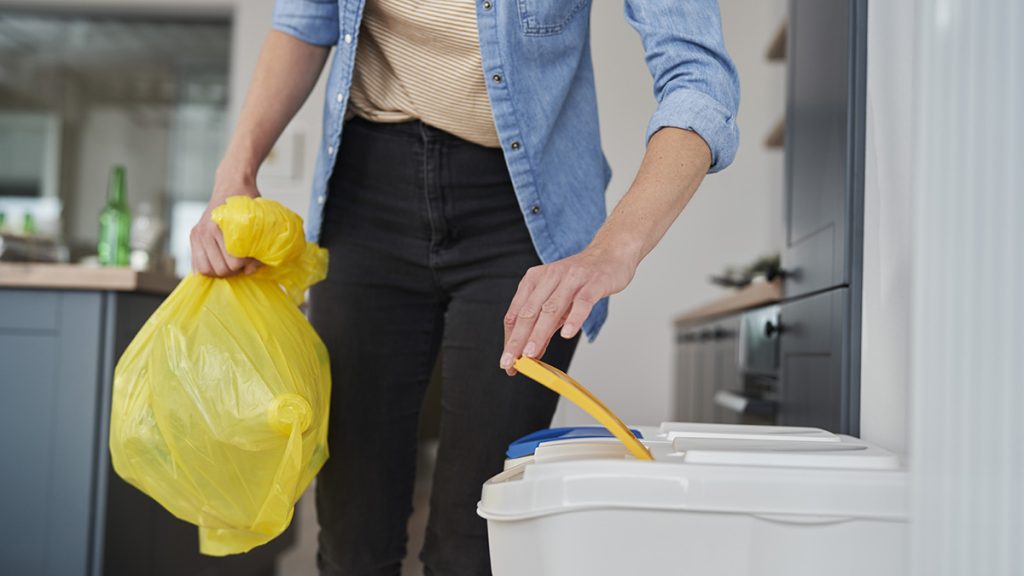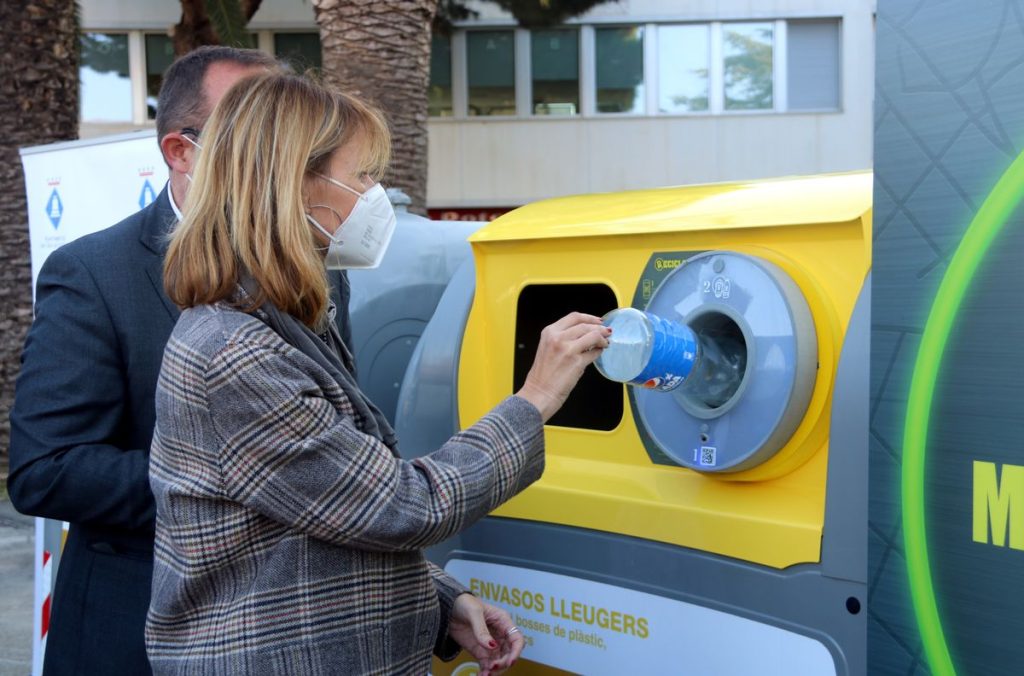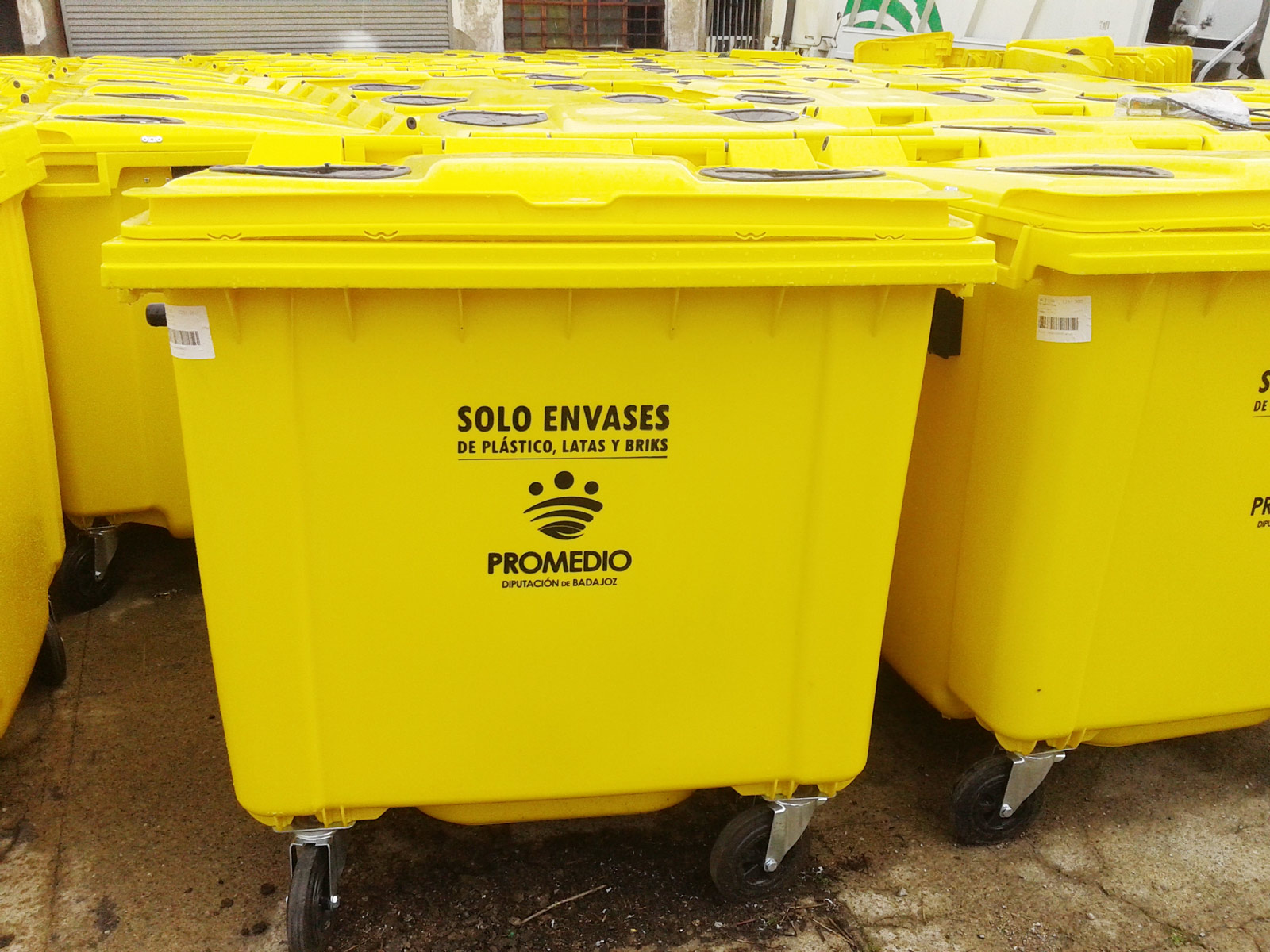The yellow garbage can is now part of our everyday urban landscape. It has been in our streets for 20 years and we have become more and more used to it. But we do not always separate our waste properly. Although we know that plastic bottles and containers, metal containers and cartons go here, we often think that all plastic has a place in this container.

Ecoembes’ figures show that out of the 18.6 kilograms of waste that each individual threw away on average in these containers, 28.6% was inappropriate, i.e. it was not correctly sorted. For example, bottles, pacifiers, or toys should go into the waste garbage can (the gray bin with the orange lid); as should laminated paper (such as that used in fish shops), Tupperware, or the casings of cassette tapes, CDs or VHS tapes. Basically, any plastic that is not packaging.
Ecoembes explains that the waste that should be thrown away in the yellow garbage can are basically: plastic bottles; food and beverage cans; plastic, metal or metal caps and lids; aluminum or white cork trays; aerosols and deodorant bottles; plastic bags; food tubs and lids such as yogurts; film and aluminum foil; toothpaste tubes and cartons. In addition, on their website, we can find a bot that helps us to clarify possible doubts about other items.

When the truck collects the waste deposited in the yellow garbage can – and here Ecoembes refutes the urban saying “recycling is useless because they mix it up“, explaining that the same truck is often used to collect different containers, since the vehicle has different containers for each type of waste – it takes it to one of the 96 sorting plants that operate in Spain. There, everything that has been badly recycled is discarded and the waste is sorted according to the material of which it is composed.
“The main challenge of recycling is to select well,” says Alvaro Otero, coordinator of corporate affairs at Ecoembes. He reiterates the importance of recycling at home. Of the 1.5 million tons of packaging collected in 2019 in Spain, according to the latest Eurostat data, 69.6% was recycled (although Greenpeace greatly lowers this percentage and claims that plants reject a large part of the waste due to the high cost of recycling). In the total waste generated, this rate drops to 39.3%.
In 2019, 483.7 kilograms of waste were collected per person, of which only 106.6 kilograms came from recycling garbage cans; as published by the INE last November. Although there are ways to try to recover some of that recyclable waste that ends up in the residual bin, Cristina Muñoz, corporate communications coordinator at Ecoembes, states that it is not always possible and that it “hinders the process”.

Once the sorting process is completed, the waste is sent to recycling plants. Depending on its composition, the recycling process will be more or less successful. Aluminum and PET plastics (such as those from water bottles) are the most easily recyclable. At the other extreme are tetrabriks and multilayer plastics. An example of the latter is popcorn packets, a mixture of paper and plastic; or cardboard cups for take-away coffee, which also have plastic in their composition.
In the case of the cartons, Otero says that out of the three layers that make up the cartons (one of cardboard, one of aluminum, and one of plastic), current technology is only capable of separating the cardboard. In other words, it is the only thing that is recycled. The rest ends up in landfills or goes to energy recovery, i.e., to take advantage of the energy obtained from incineration. The environmental cost of both options is very high.
Another key factor in the recycling of waste is its size. The larger the packaging, the easier it is to recycle. It is therefore advisable not to break large packaging during unpacking (as in the case of plastic mattress covers). An additional problem is black packaging since part of the sorting process is carried out with optical sensors, which do not detect this color.
Greenpeace warns that there are recycling plants that prioritize the economic cost of recycling over the environmental impact and, consequently, discard waste with very complex composition or that is too small. Faced with this possibility, one option when filling the shopping cart is to try to avoid these containers. For example, cleaning products with sprayers usually have different types of plastic (the one in the can, the one in the bottle, the one in the thread, and the one in the sprayer itself).
However, Otero warns that this reduction should always take into account other aspects. For instance, if we avoid using cartons and buy food in containers that do not guarantee the same preservation, we may end up wasting more food. The same is true if we favor the purchase of larger packages.
Both Greenpeace and Ecoembes recommend reducing and substituting the use of plastic bags. The NGO proposes the use of alternatives, such as cloth bags or shopping carts and nets for fruits and vegetables, since the production of the bags themselves has a very high environmental impact. Regarding the bags provided by supermarkets for fruit and vegetables, they should be placed in the waste container (or organic, if there is one in our community).
Despite the importance of recycling, Ecoembes and Greenpeace emphasize that recycling is only one of the steps to make our consumption more sustainable. The most important is to avoid generating waste, either by reducing consumption, reusing waste or selling stuff we no longer want (such as our children’s clothes or toys when they grow up). And, of course, to give a second life to everything we don’t use, we can always turn to associations that collect it. As the NGO points out, we can all make “small changes so that the yellow bag becomes smaller and smaller”.





